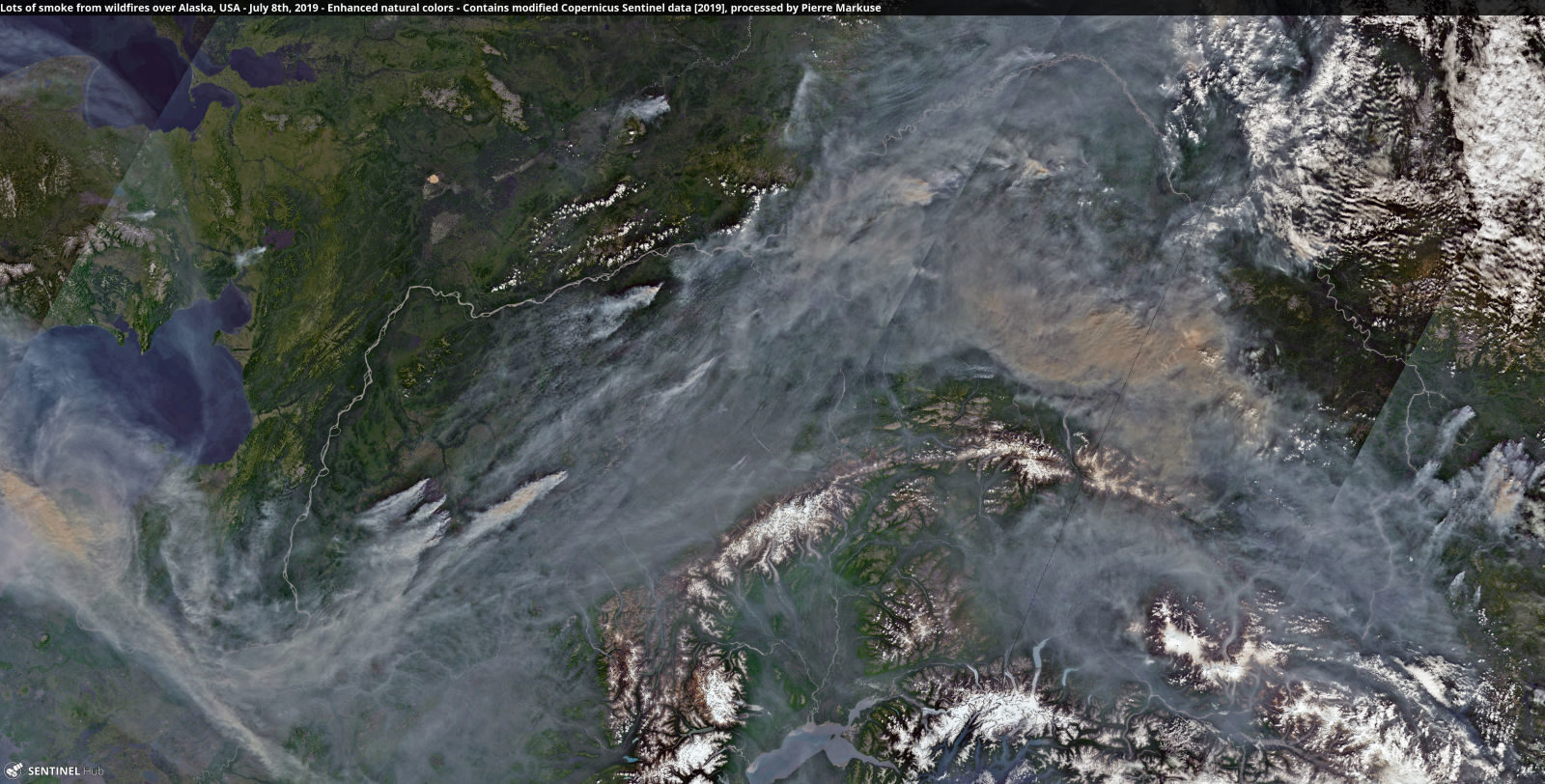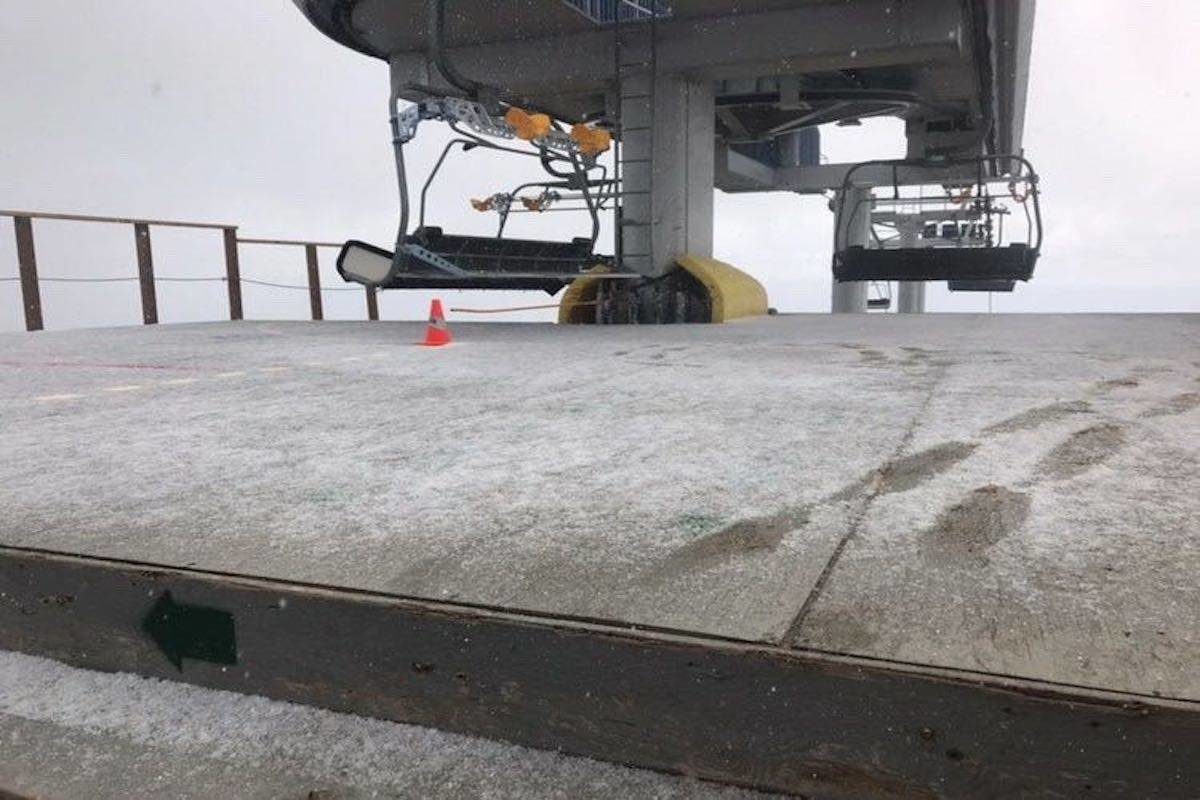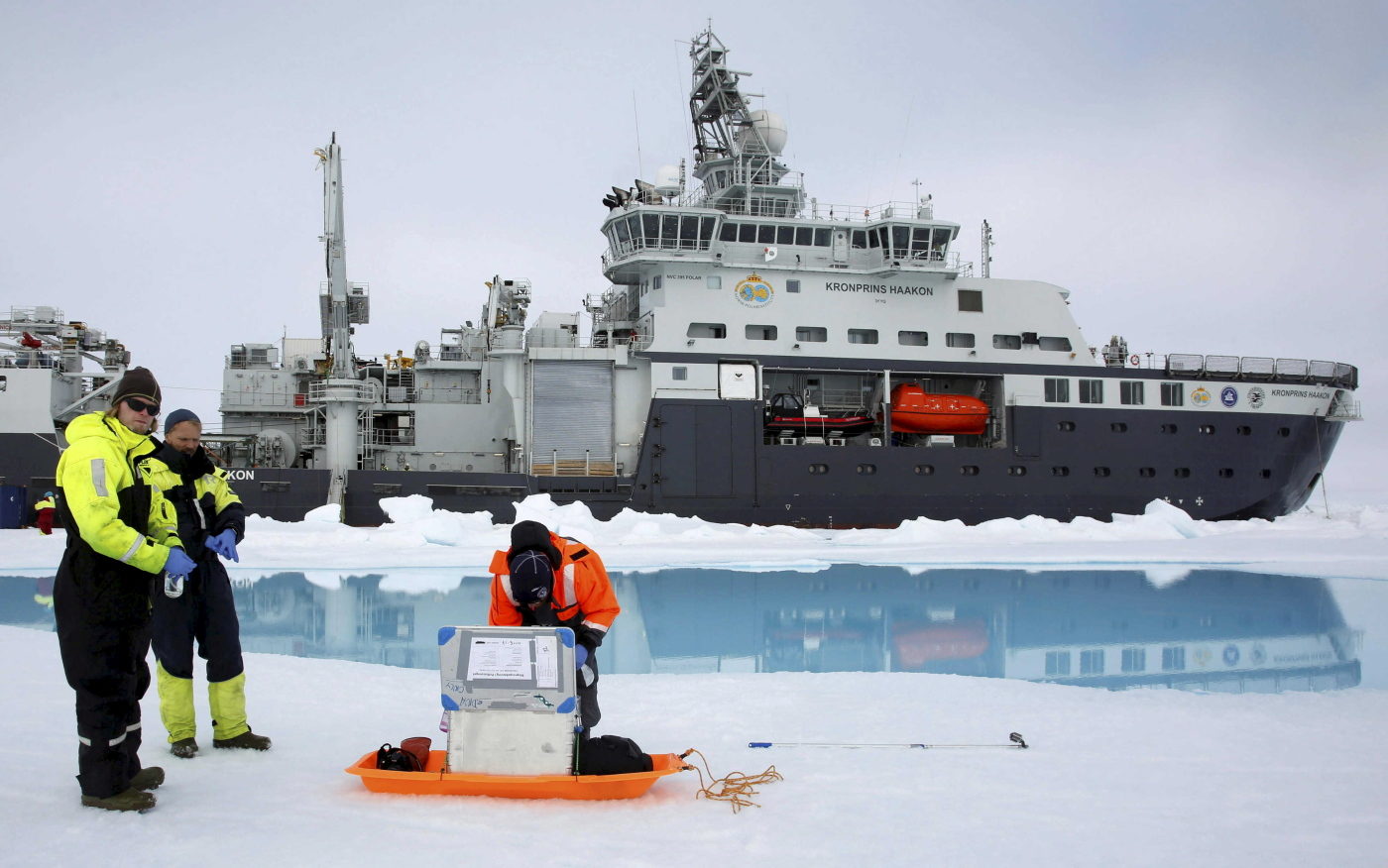
© Pierre Markuse
Vast stretches of Earth's northern latitudes are on fire right now.
Hot weather has engulfed a huge portion of the Arctic, from Alaska to Greenland to Siberia. That's helped create conditions ripe for wildfires, including some truly massive ones burning in remote parts of the region that are being seen by satellites.
Pierre Markuse, a satellite imagery processing guru, has
documented some of the blazes attacking the forests and peatlands of the Arctic. The imagery reveals the delicate landscapes with braided rivers, towering mountains, and vast swaths of forest, all under a thick blanket of smoke.
In Alaska, those images show some of the damage wrought by wildfires that have burned more than
1.6 million acres of land this year. Huge fires have sent smoke streaming cities
earlier this month, riding on the back of
Anchorage's first 90 degree day ever recorded. The image below show some of the more remote fires in Alaska as well as the Swan Lake Fire, which was responsible for the smoke swallowing Anchorage in late June and earlier this month.
Comment: RT reports on the current situation in Siberia:
Almost 44,000 people have signed a petition calling for authorities to declare an emergency in the Siberian Federal District due to wildfires in Krasnoyarsk and Irkutsk regions, RIA Novosti reported.
As of Wednesday morning, wildfires had covered almost 846,000 hectares in the north of the Krasnoyarsk territory, with officials saying that there was no immediate threat to cities and villages.
However, local residents say that pollution from wildfires in Krasnoyarsk has spread with air flows to other regions, covering many areas with a thick haze and burning smell.
Large swathes of the Arctic, including in Alaska, northern Canada, and Greenland are also on fire. Mark Parrington, a senior scientist at Denmark's Copernicus Atmosphere Monitoring Service, said that it was fair to say that July's "Arctic Circle wildfires are now at unprecedented levels."
If there was any merit to global warming due to carbon emissions then the
rise in volcanic activity would be much more of a concern. However, by all measures, our planet, overall, is
cooling - with cold records being
broken all the time, and in both hemispheres. And so these wildfires, heatwaves and droughts are simply one aspect of the extreme fluctuations that occur as our planet continues on into an unsettled period where lower temperatures will soon dominate.
See also:
For more on what's occurring on our planet, check out SOTT radio's:
Behind the Headlines: Earth changes in an electric universe: Is climate change really man-made?SOTT is also tracking these shifts in a monthly documentary:
SOTT Earth Changes Summary - June 2019: Extreme Weather, Planetary Upheaval, Meteor Fireballs


Comment: RT reports on the current situation in Siberia: If there was any merit to global warming due to carbon emissions then the rise in volcanic activity would be much more of a concern. However, by all measures, our planet, overall, is cooling - with cold records being broken all the time, and in both hemispheres. And so these wildfires, heatwaves and droughts are simply one aspect of the extreme fluctuations that occur as our planet continues on into an unsettled period where lower temperatures will soon dominate.
See also:
- Professor Valentina Zharkova explains and confirms why a "Super" Grand Solar Minimum is upon us
- Europe's record breaking warm winter leads to unprecedented wildfires
- Colder summers killing Antarctica's moss forests
- Erratic seasons and extreme weather devastating crops around the world
- SOTT Exclusive: The growing threat of underground fires and explosions
For more on what's occurring on our planet, check out SOTT radio's: Behind the Headlines: Earth changes in an electric universe: Is climate change really man-made?SOTT is also tracking these shifts in a monthly documentary: SOTT Earth Changes Summary - June 2019: Extreme Weather, Planetary Upheaval, Meteor Fireballs